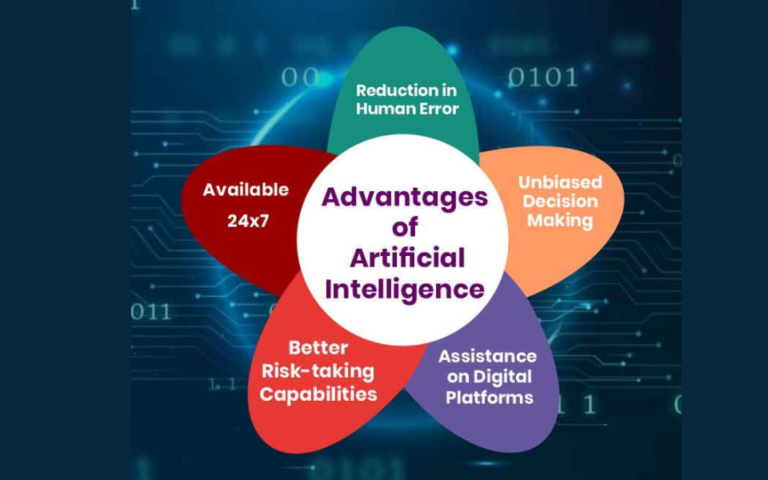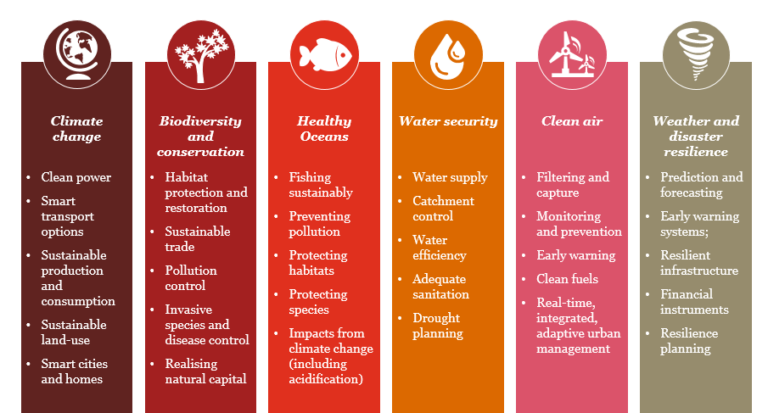The Impact Of AI On The Environment: How Can AI Help Us Reduce Our Impact On The Planet?

Today, we are faced with an ever-growing concern for our environment. With the rapid advancement of technology, particularly Artificial Intelligence (AI), we find ourselves pondering the potential impact it can have on reducing our carbon footprint and preserving our planet. In this article, we will explore the various ways in which AI can assist us in minimizing our environmental impact. From optimizing energy usage to improving waste management, AI holds tremendous potential in shaping a sustainable and greener future for all. So, let’s delve into the world of AI and discover how it can be a powerful ally in creating a healthier planet for generations to come.

The Impact of AI on the Environment
Artificial Intelligence (AI) is transforming various industries and sectors, and its potential to address environmental challenges is increasingly being recognized. By leveraging advanced algorithms and data analysis techniques, AI can contribute to reducing energy consumption, minimizing emissions and pollution, conserving natural resources, addressing climate change, improving environmental monitoring, promoting circular economy practices, and ensuring ethical considerations and sustainability. Moreover, collaboration and partnerships between different stakeholders are crucial for implementing AI solutions effectively and overcoming challenges and limitations.
Understanding the Role of AI in the Environment
AI refers to the development of computer systems capable of performing tasks that would typically require human intelligence. In the context of the environment, AI can play a significant role in analyzing large volumes of data, identifying patterns, predicting outcomes, and optimizing systems. By automating processes, AI can help in making more informed and efficient decisions, leading to positive environmental outcomes.
Environmental Challenges AI Can Address
AI can address a wide range of environmental challenges that impact our planet. These challenges include excessive energy consumption, air and water pollution, depletion of natural resources, climate change, and the deterioration of ecosystems. By applying AI techniques, such as machine learning and data analysis, to these challenges, we can develop innovative solutions and mitigate their impact on the environment.
Positive Impact of AI on the Environment
AI has the potential to create a positive impact on the environment in several ways. By reducing energy consumption, minimizing emissions and pollution, conserving natural resources, addressing climate change, improving environmental monitoring, promoting circular economy practices, and ensuring ethical considerations and sustainability, AI can help us transition to a more sustainable future. Let’s explore each of these areas in detail.
Reducing Energy Consumption
Optimizing Industrial Processes
AI can optimize industrial processes by analyzing data from various sensors and devices, enabling real-time adjustments to production and energy consumption. By identifying patterns and inefficiencies, AI can suggest improvements in operations, leading to energy savings and reduced environmental impact.
Enhancing Energy Efficiency in Buildings
Buildings account for a significant portion of global energy consumption. AI can contribute to enhancing energy efficiency in buildings by automating systems and analyzing data from sensors to optimize energy usage. By adjusting lighting, heating, and cooling systems based on occupancy and weather conditions, AI can reduce energy waste and lower carbon emissions.
Smart Grids for Energy Management
The integration of AI in energy management systems can lead to the development of smart grids. These smart grids can intelligently balance energy supply and demand, optimize distribution, and coordinate renewable energy generation. By leveraging AI algorithms, we can maximize the utilization of renewable energy sources and enhance the reliability and efficiency of the overall energy grid.
Minimizing Emissions and Pollution
Optimizing Transportation Systems
Transportation is a major contributor to air pollution and greenhouse gas emissions. AI can optimize transportation systems by analyzing traffic patterns, predicting demand, and optimizing routes and schedules. By promoting the use of electric vehicles, optimizing logistics, and reducing congestion, AI can help minimize emissions and create more sustainable transportation networks.
Reducing Air and Water Pollution
AI can assist in reducing air and water pollution by analyzing data from sensors and satellites to identify pollution sources, monitor air quality, and predict pollution levels. By providing accurate and timely information, AI can support decision-making processes and help implement effective pollution control measures.
Smart Waste Management
Efficient waste management is essential for reducing pollution and promoting a circular economy. AI can optimize waste management processes by analyzing data on waste generation, collection routes, and recycling facilities. By identifying opportunities for waste reduction, improving recycling practices, and optimizing resource allocation, AI can contribute to minimizing environmental impact.

Conserving Natural Resources
Precision Agriculture and Resource Management
AI can revolutionize agriculture by enabling precision farming techniques. By analyzing data from sensors, satellites, and historical datasets, AI can provide insights on optimal planting, irrigation, and nutrient management practices. By optimizing resource utilization, reducing chemical inputs, and enhancing crop yields, AI can contribute to conserving natural resources and promoting sustainable agriculture.
Protecting Ecosystems and Biodiversity
AI can play a vital role in protecting ecosystems and biodiversity by analyzing data on species distribution, habitat fragmentation, and environmental changes. By identifying at-risk areas and species, AI can support conservation efforts and facilitate informed decision-making to minimize the loss of biodiversity and preserve ecosystems.
Sustainable Water Management
Water scarcity is a growing concern in many regions around the world. AI can support sustainable water management by analyzing data from water bodies, weather patterns, and consumption rates. By identifying water inefficiencies, optimizing irrigation systems, and predicting water availability, AI can contribute to conserving water resources and ensuring long-term sustainability.
Addressing Climate Change
Climate Modeling and Prediction
AI can improve climate modeling and prediction by analyzing vast amounts of data from satellites, weather stations, and climate models. By identifying climate patterns, predicting extreme weather events, and evaluating the impacts of climate change, AI can help policymakers and stakeholders develop effective strategies for climate adaptation and mitigation.
Developing Renewable Energy Solutions
AI can accelerate the development of renewable energy solutions by analyzing data on energy production, resource availability, and consumer demand. By optimizing the design and operation of renewable energy systems, AI can maximize energy generation and enhance the integration of clean energy sources into the grid.
Mitigating Natural Disasters
AI can contribute to mitigating the impacts of natural disasters by providing early warning systems, analyzing disaster data, and supporting emergency response efforts. By leveraging AI for real-time monitoring and analysis, stakeholders can make informed decisions and take prompt actions to minimize the loss of life and property during natural disasters.
Improving Environmental Monitoring
Remote Sensing and Earth Observation
AI can enhance remote sensing and earth observation by analyzing satellite imagery and sensor data for monitoring environmental changes. By detecting deforestation, urbanization, land degradation, and other environmental factors, AI can support conservation efforts, land management practices, and the monitoring of protected areas.
Monitoring Wildlife and Conservation Efforts
AI can assist in monitoring wildlife populations and conservation efforts by analyzing data from camera traps, acoustic sensors, and satellite tracking devices. By identifying species populations, tracking migration patterns, and detecting poaching activities, AI can help protect endangered species and support wildlife conservation initiatives.
Early Detection of Environmental Risks
AI can enable early detection of environmental risks by analyzing data from various sources, including sensors, social media, and citizen science platforms. By identifying potential threats, such as pollution spills, wildfires, or disease outbreaks, AI can support proactive measures and ensure timely responses for mitigating environmental risks.
Promoting Circular Economy
Optimizing Waste Recycling Processes
AI can optimize waste recycling processes by analyzing data on waste composition, sorting technologies, and recycling facilities. By improving sorting accuracy, streamlining recycling operations, and identifying new recycling opportunities, AI can contribute to reducing waste, conserving resources, and promoting a circular economy.
Improving Supply Chain Management
AI can improve supply chain management by analyzing data on material flows, transportation routes, and production processes. By optimizing logistics, reducing waste generation, and enhancing resource efficiency, AI can help create a more sustainable and circular supply chain that minimizes environmental impact.
Reducing Resource Waste
AI can assist in reducing resource waste by analyzing data on resource consumption, product lifecycle, and end-of-life management. By identifying areas of inefficiency, promoting product reuse and repair, and optimizing resource allocation, AI can contribute to reducing resource waste and supporting a circular economy model.
Ethical Considerations and Sustainability
Ensuring Responsible AI Development
As AI technology advances, it is crucial to ensure responsible and ethical development and deployment. Stakeholders must prioritize transparency, accountability, and fairness in AI systems. By considering environmental impacts, social implications, and long-term sustainability, we can ensure that AI advances align with ethical principles and contribute positively to the environment.
Avoiding Bias and Discrimination
AI algorithms rely on data for training and decision-making, and biased or discriminatory data can lead to unfair outcomes. It is essential to address bias and discrimination in AI systems, particularly in applications related to the environment. By ensuring diverse and representative datasets and developing robust evaluation frameworks, we can minimize the risk of bias and discrimination in AI-driven environmental solutions.
Promoting Fair and Transparent AI Use
Fairness and transparency are crucial for building trust in AI systems. It is essential to promote access to AI technologies, ensure equal opportunities for participation, and provide clear explanations of AI-generated recommendations and decisions. By fostering fair and transparent AI use, we can ensure that the benefits of AI for the environment are distributed equitably and that the decision-making process remains inclusive and accountable.
Collaboration and Partnerships
Public-Private Cooperation for AI Solutions
Collaboration between the public and private sectors is vital for leveraging AI effectively in addressing environmental challenges. Governments, businesses, academia, and civil society organizations can come together to share knowledge, resources, and expertise. By fostering collaboration, we can accelerate the development and deployment of AI solutions for a more sustainable future.
International Collaboration on Environmental AI
Environmental challenges are global in nature and require international cooperation. By promoting collaboration and knowledge-sharing among countries, we can harness the potential of AI to address environmental issues at a global scale. International initiatives and partnerships can facilitate the exchange of best practices, data, and technologies, ensuring that AI solutions are effective in diverse environmental contexts.
Engaging Communities in AI Projects
Engaging communities in AI projects is crucial for their success and long-term sustainability. By involving local communities in the design, implementation, and monitoring of AI-driven environmental initiatives, we can ensure that solutions are context-specific, address community needs and concerns, and empower individuals to actively contribute to environmental conservation efforts.
Challenges and Limitations
Data Privacy and Security Concerns
AI relies heavily on data, raising concerns related to data privacy and security. Collecting and analyzing vast amounts of data can potentially compromise individuals’ privacy and expose sensitive information. It is essential to establish clear regulations and ethical guidelines to protect data privacy and ensure secure storage and transmission of data in AI systems.
Unintended Consequences in AI Adoption
The adoption of AI solutions can sometimes have unintended consequences. It is important to carefully evaluate the potential impacts of AI deployment, considering factors such as job displacement, social inequalities, and environmental trade-offs. By conducting thorough impact assessments and implementing appropriate safeguards, we can maximize the positive contributions of AI while minimizing any unintended negative effects.
Addressing Technological Inequality
Access to AI technologies and expertise is not evenly distributed, creating technological inequalities. It is crucial to address this inequality by promoting capacity building, knowledge sharing, and technology transfer. Ensuring that AI solutions are accessible and affordable to all stakeholders can help bridge the technological divide and ensure that the benefits of AI for the environment are realized by diverse communities.
In conclusion, AI has the potential to revolutionize our approach to environmental challenges and contribute to a more sustainable future. By optimizing energy consumption, reducing emissions and pollution, conserving natural resources, addressing climate change, improving environmental monitoring, promoting circular economy practices, and prioritizing ethical considerations and sustainability, AI can help us reduce our impact on the planet. Collaboration and partnerships, coupled with addressing challenges and limitations, will be crucial in harnessing the full potential of AI for the environment. By working together, we can leverage AI as a powerful tool in preserving and protecting our planet for future generations.
Want to write articles like us? Get your copy of AI WiseMind here!






